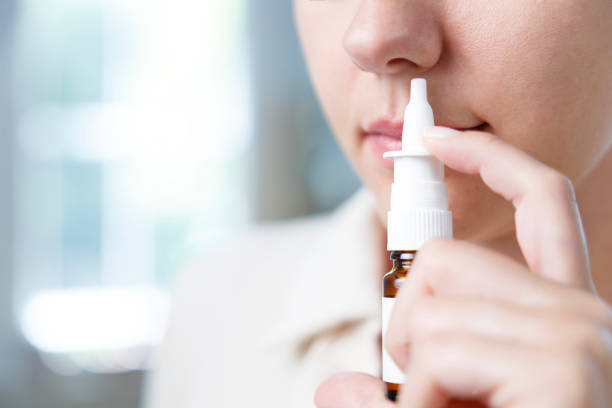USP Inhaler Actuator Orifice Dimension Testing
The USP Inhaler Actuator Orifice Dimension Testing is a critical procedure aimed at ensuring that inhalation and nasal products meet the stringent requirements set forth by the United States Pharmacopeia (USP). This test ensures that the actuator orifice, which controls the release of medication from an inhaler device, operates within specified dimensional tolerances. The accuracy of the orifice directly impacts the delivery efficiency and patient safety of aerosolized medications.
The testing process is designed to verify that the orifice size complies with USP Chapter 601 guidelines, which outline specific dimensions and tolerances. The actuator's ability to deliver consistent dosages is paramount for effective medication therapy. Any deviation in orifice size could lead to under-dosing or over-dosing, both of which have significant implications for patient health.
The testing apparatus typically consists of a high-precision gauge capable of measuring the internal diameter of the actuator orifice with an accuracy better than ±0.01 mm. The gauge is calibrated against known standards and undergoes regular maintenance to ensure reliable results. Specimen preparation involves extracting samples from production batches, ensuring that each sample is representative of the batch's homogeneity.
During testing, the gauge is inserted into the actuator orifice, and measurements are taken at multiple points around the circumference. The average diameter is calculated, and this value is compared against the USP specifications. If the measured dimension falls within the allowable tolerance range, the product passes the test; otherwise, it fails.
The importance of this testing cannot be overstated. For quality managers and compliance officers, ensuring that inhalation products meet regulatory standards is essential for maintaining a reputable brand image and avoiding costly recalls or legal actions. R&D engineers benefit from precise control over actuator design to optimize medication delivery. Procurement teams can use the results of this test to verify that purchased components meet required specifications.
Accurate testing helps pharmaceutical companies ensure that their products perform as intended, enhancing patient outcomes and compliance with regulatory requirements. The precision demanded by USP standards underscores the critical role played by each component in inhalation devices.
Applied Standards
| Standard | Description |
|---|---|
| USP Chapter 601 | The official standards for testing inhaler actuator orifices, specifying dimensions and tolerances. |
| ASTM E1838 | American Society for Testing and Materials standard on the measurement of internal diameters of small holes using a gauge. |
The testing process adheres to strict standards outlined in USP Chapter 601, which specifies the dimensional tolerances for inhaler actuators. Compliance with these standards ensures that all products meet the required performance criteria, thereby enhancing patient safety and efficacy.
ASTM E1838 provides additional guidance on the measurement techniques used in conjunction with USP Chapter 601. This standard describes the precision requirements of the testing apparatus and the procedures for conducting accurate measurements. Together, these standards form the backbone of the quality assurance process for inhalation products.
Benefits
The benefits of USP Inhaler Actuator Orifice Dimension Testing extend beyond mere compliance with regulatory requirements. By ensuring that the orifice dimensions are accurate and consistent, this testing enhances patient safety and improves treatment efficacy. Consistent dosing is critical for effective medication therapy, particularly in chronic conditions where precise control over drug delivery can significantly impact outcomes.
For quality managers, the test provides a robust method to monitor production consistency across batches. This ensures that each product consistently meets the required standards, reducing variability and enhancing trust with regulatory bodies. Compliance officers benefit from clear documentation of adherence to USP guidelines, which can mitigate risks associated with non-compliance.
R&D engineers gain valuable insights into how design changes affect performance. By testing under real-world conditions, they can optimize actuator designs for better performance and reliability. Procurement teams can verify that suppliers meet the necessary specifications, ensuring that only high-quality components are used in production.
The results of this test also contribute to long-term market reputation by demonstrating a commitment to quality and patient safety. In an era where public trust is increasingly important, consistent adherence to rigorous testing protocols can differentiate pharmaceutical companies from their competitors.
In summary, USP Inhaler Actuator Orifice Dimension Testing is not just a compliance requirement but a cornerstone of effective medication delivery systems that prioritize patient well-being.
Competitive Advantage and Market Impact
The ability to perform accurate USP Inhaler Actuator Orifice Dimension Testing offers significant competitive advantages in the pharmaceutical market. By ensuring consistent product quality, companies can build a reputation for reliability and trustworthiness that differentiates them from competitors. This is particularly important given the increasing emphasis on patient safety and efficacy in the pharmaceutical industry.
Consistent adherence to USP standards not only meets regulatory requirements but also sets a benchmark for excellence within the industry. This commitment to high-quality manufacturing processes can lead to increased market share, as customers are more likely to choose products from companies that demonstrate a strong commitment to quality.
The precision of this testing process can also contribute to innovation in inhalation product design. Engineers and researchers can use test results to refine designs, leading to improved performance and patient satisfaction. This continuous improvement cycle enhances the overall competitiveness of pharmaceutical companies.
In addition to internal benefits, successful USP testing can positively impact market perception. Transparency about adherence to regulatory standards fosters trust with patients and healthcare providers. This trust is crucial in a market where public scrutiny of drug safety and efficacy is higher than ever before.
Moreover, the ability to demonstrate compliance with rigorous international standards like those set by the USP can open doors to new markets and opportunities for collaboration. International collaborations and exports become more feasible when a company can confidently showcase its commitment to global regulatory standards.





